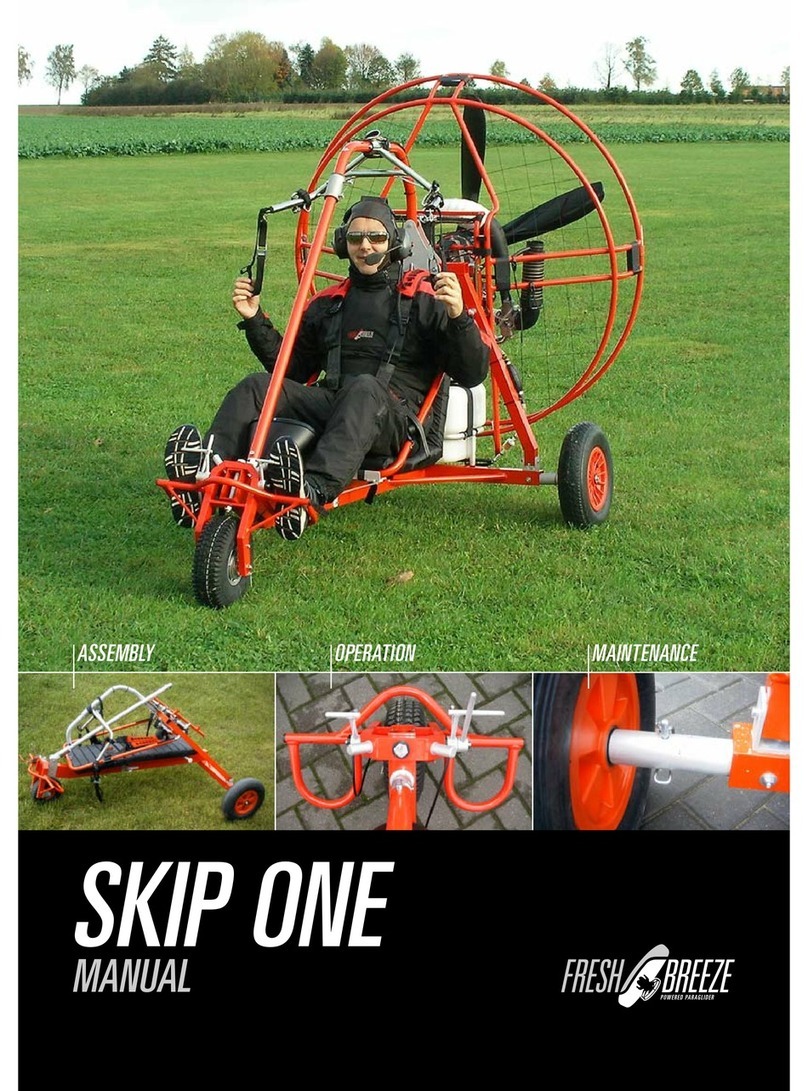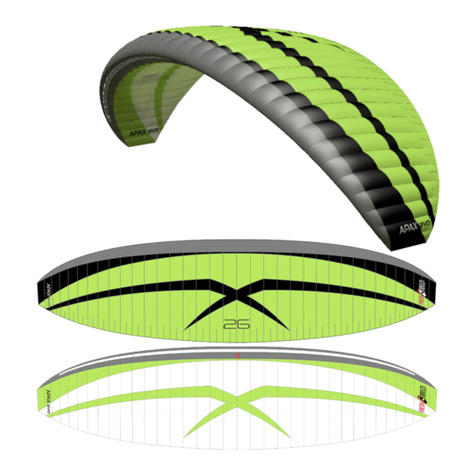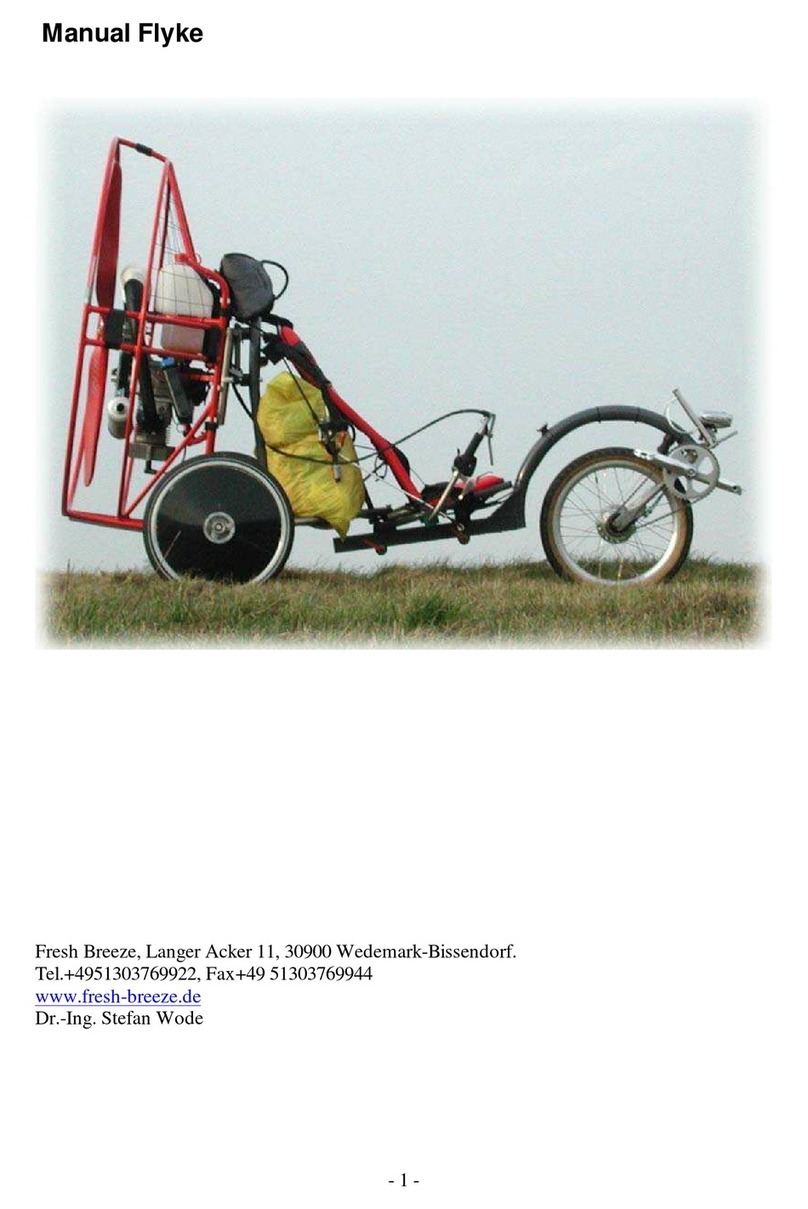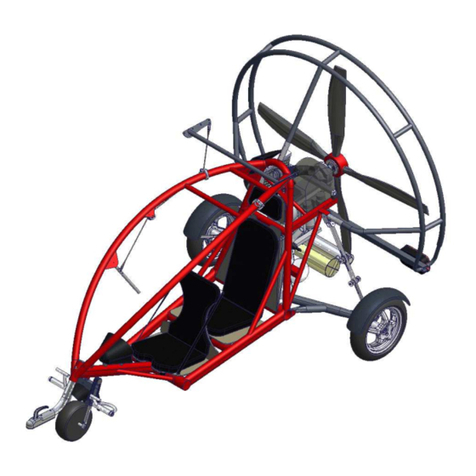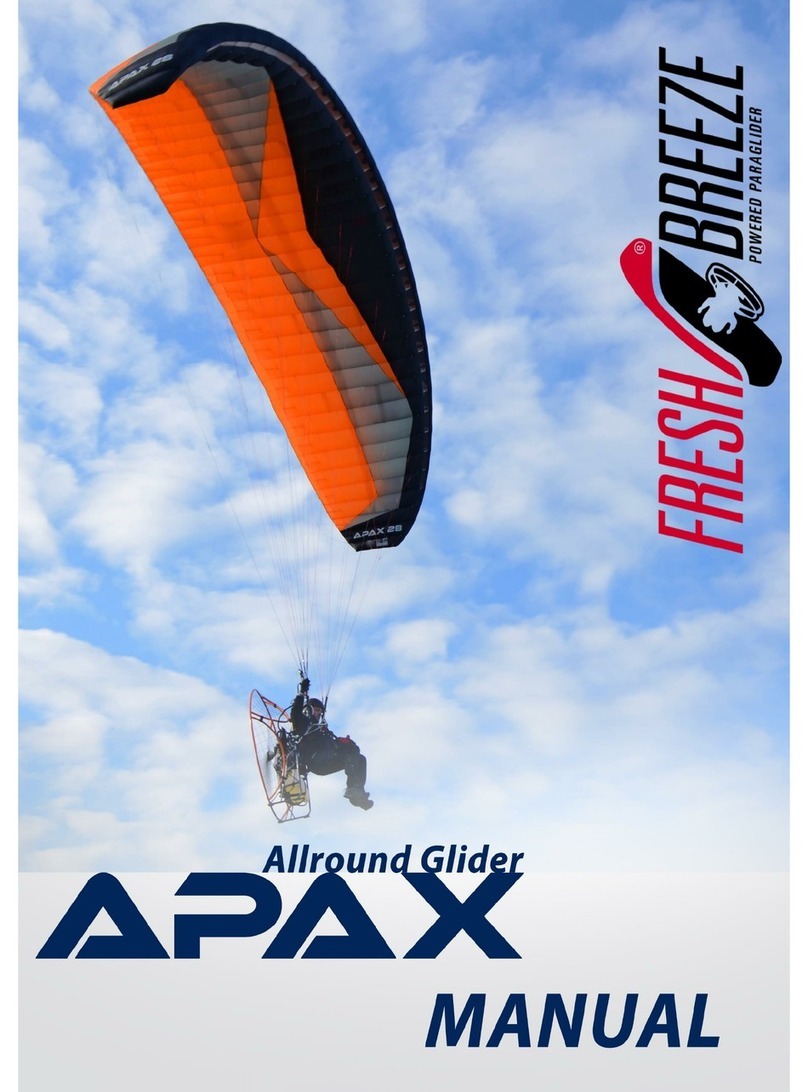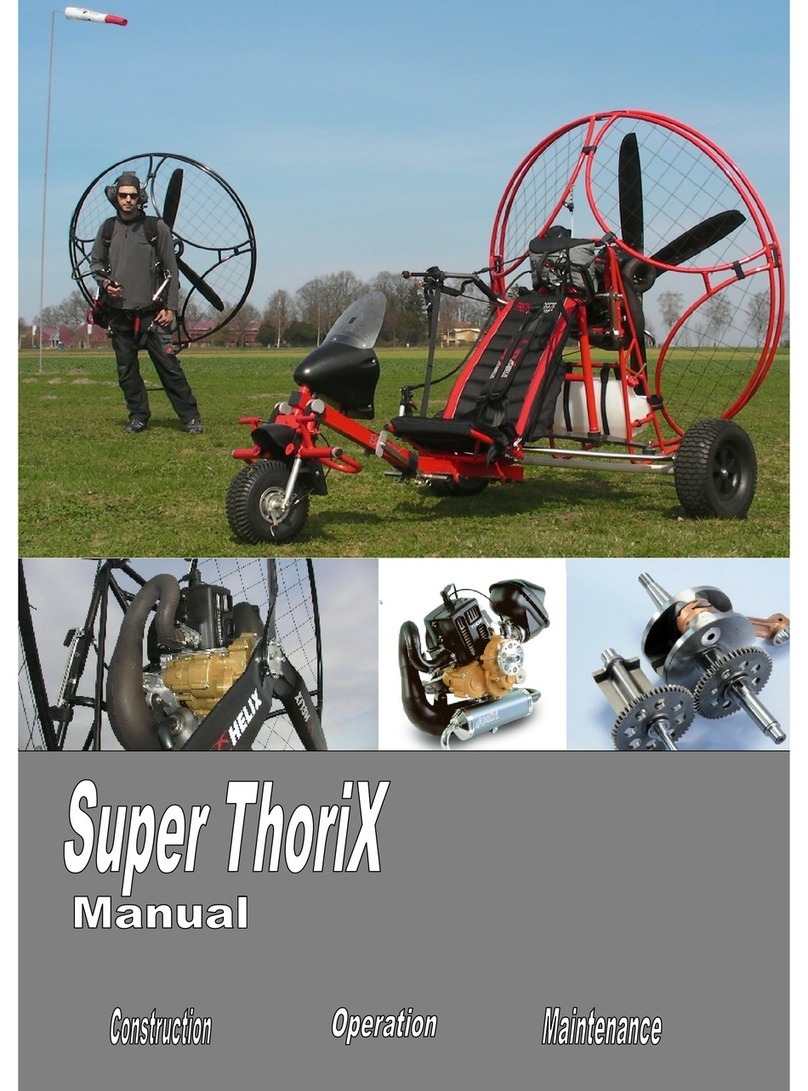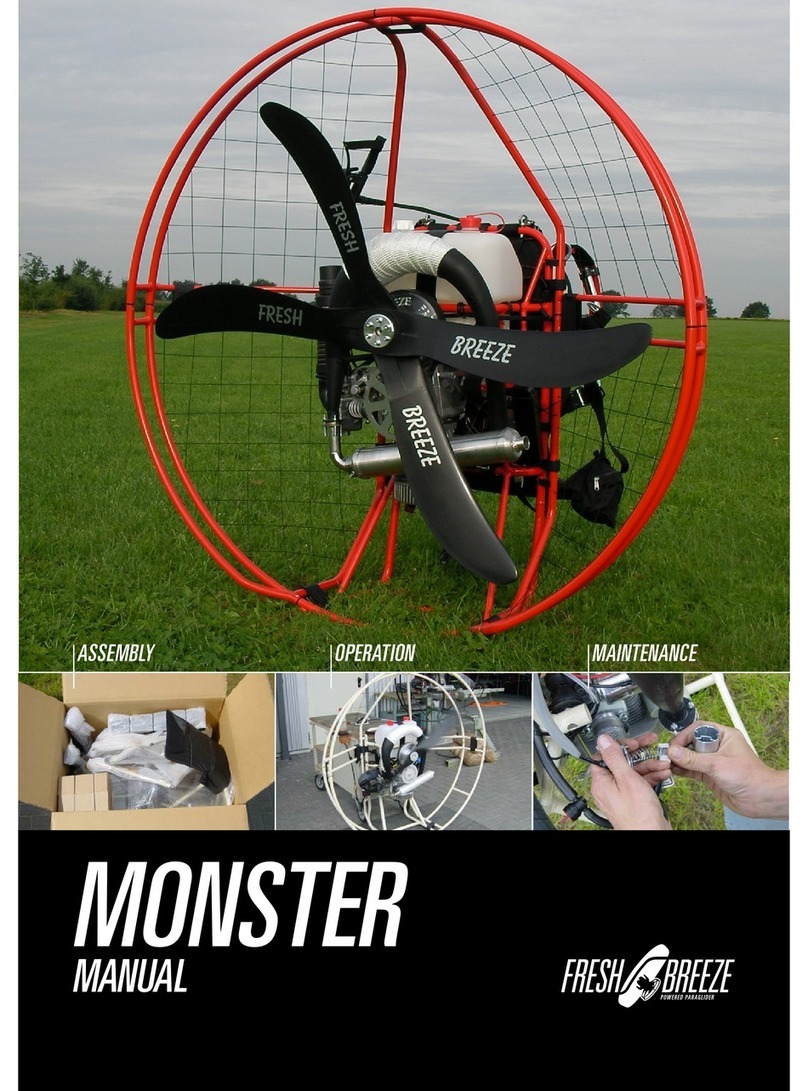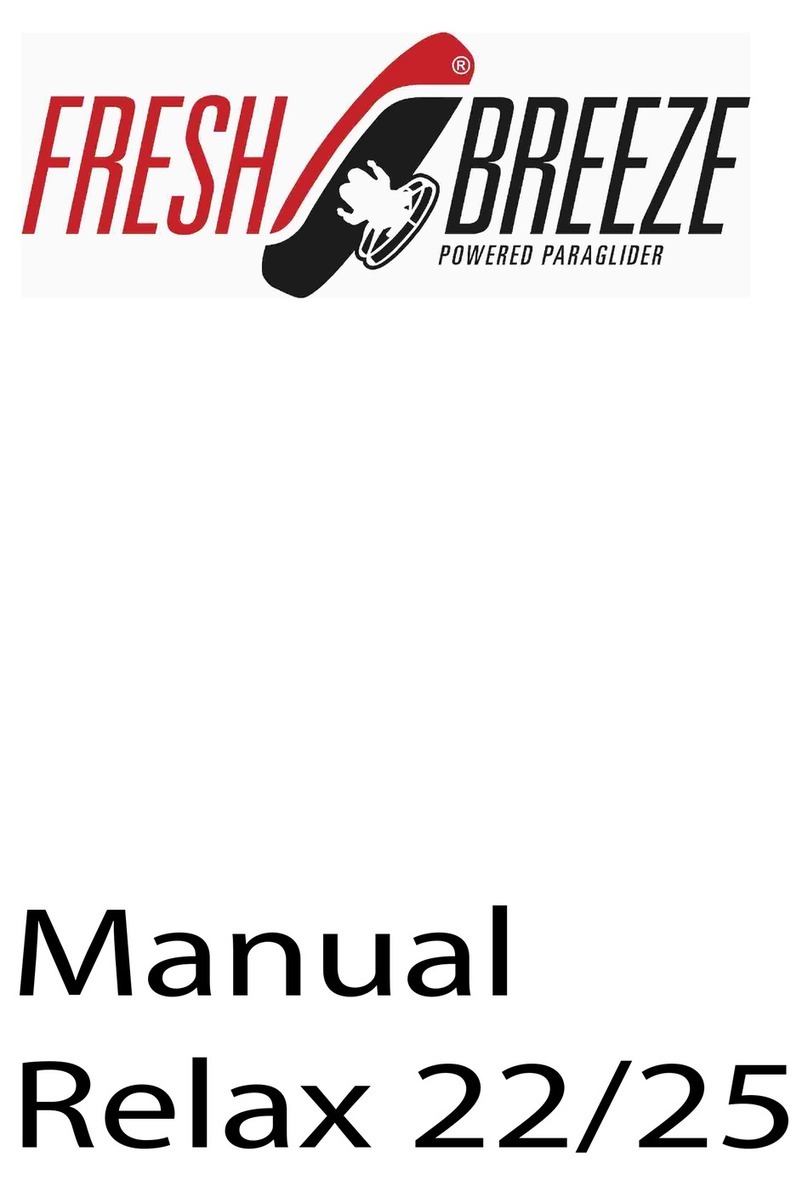INTRODUCTION
This manual has been prepared to provide pilots and instructors information to
contribute safe and efficient operation of this paramotor trike.
It contains important legal information, additional information from the manufacturer of the
trike.
To fly this aircraft a licens for paramotor trike is required and the authorization for two-seater
flying when a passenger is on board. In addition, may be started and ended only on approved
courses. Flights inside the controlled flight space require a permit, the most requested on radio
and is issued. Other legal requirements, such as third party liability insurance must
observed.
The pilot must become familiar with the aircraft prior to the first flight
It is mandatory to read the manuals and operating instructions.
FLIGHT OPERATIONS
Legal basis for the operation of UL –Paramotor Tikes are regulated in the air right
Details are given in the relevant regulations. Every country has its own laws
Rregulations and requirements must be observed when operating.
ADMISSION
The trike is registered with the DGAC and thus legal to operate in Germany.
The legal basis shall be the:§ 11 LuftGerPV,
(1) Bei Luftsportgerät nach § 1Absatz 4 Nummer 1 der Luftverkehrs-Zulassungs-Ordnung hat
der Hersteller vor der Auslieferung an den Kunden eine Prüfung, ob das Muster mit den
anwendbaren Lufttüchtigkeitsforderungen übereinstimmt, in einer Inspektionsstelle oder einer
Prüfstelle durchführen und die Übereinstimmung bescheinigen zu lassen, die akkreditiert ist
nach der Verordnung (EG) Nr. 765/2008 des Europäischen Parlaments und des Rates vom
9. Juli 2008 über die Vorschriften für die Akkreditierung und Marktüberwachung im
Zusammenhang mit der Vermarktung von Produkten und zur Aufhebung der Verordnung
(EWG) Nr. 339/93 des Rates (ABl. L 218 vom 13.8.2008, S. 30) gemäß ISO/IEC 17020 oder
ISO/IEC 17025 Standard. Bei Luftfahrtgerät mit einem Motor ist hierbei auch die Einhaltung
der Lärmemissionsgrenzwerte zu prüfen.
(2) Die Stückprüfung hat der Hersteller vor Auslieferung des Luftfahrtgeräts an den Kunden
entsprechend § 10 Absatz 3 Satz 1 durchzuführen. Er hat dem Halter die
Betriebsanweisungen bei Auslieferung des Luftfahrtgeräts sowie die zur Mängelbehebung
erforderlichen Anweisungen spätestens fünf Tage nach Feststellung des Mangels zur
Verfügung zu stellen.
(3) Als Hersteller gilt auch, wer Luftfahrtgerät nach Absatz 1 in die Bundesrepublik
Deutschland einführt.
(4) Muster- oder Gerätezulassungen eines Mitgliedstaates der Europäischen Union oder
eines Vertragsstaates des Abkommens über den Europäischen Wirtschaftsraum sind
unmittelbar gültig und ersetzen die Prüfungen nach den Absätzen 1 und 2.
.
